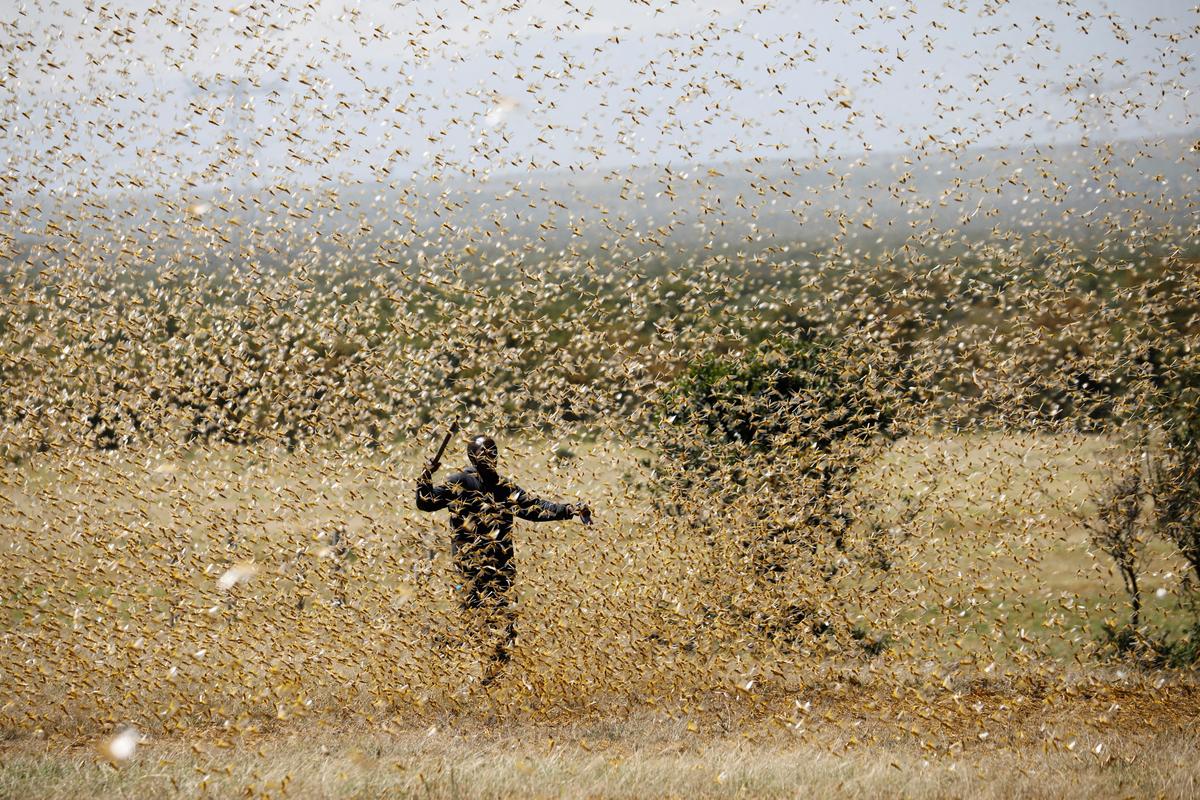0%

Swarms of locusts entered Nepal from African countries via the Middle East, Pakistan and India. (Photo: Reuters)
KATHMANDU: As the locusts have been sighted in some parts of the country, especially in the eastern parts, the Meteorological Forecasting Division has forewarned that the ongoing monsoon is likely to bring in more and more vermin to the country.
The swarms of locusts have entered Nepal from African countries via the Middle East, Pakistan and India with the help of winds, according to the experts.
The insects that often flow in swarm follow the direction of the wind to move or migrate.
Locusts could fly upto 100 to 130 kilometres in a single stretch in its swarm which consists of 40 to 80 millions of locusts, according to senior agriculture scientist Dr Kedar Budathoki.
There has been an influence of southerly-westerly wind flown for Arabian Sea in Nepal for two to three days, according to the Meteorological Forecasting Division.
The speed of the wind in Nepal 10 metres above the surface of land is recorded at 30 to 40-km per hour.
Meteorologists have predicted that the air will mostly flow from east to westward on Monday and Tuesday.
On these days, the speed of the air (to blow 10 metre above the surface of land) is estimated to be 35 kms to 45 kms per hour.
These herbivorous insects thereby could swarm towards west from the eastern parts of the country in any given moment.
The insect which is related to grasshopper family measures 0.5 to 3 inches in size and weights 1.98 to 2 grammes on average.
The locusts’ swarms pose a grave risk for agriculture damages since they feed on the crops. Budhathoki shared that a single swarm consists of millions of locusts.
Although originally found in dry land favor sandy soil to lay and hatch their eggs, they usually thrive during the monsoon as during this time the soil is often moist and there’s abundance of greenery.
There’s a good chance of storms and high winds during such environment thereby enabling a favorable breeding ground for the locusts, explained Budhathoki.
They begin to reproduce rapidly and in no time they spread like a wildfire, he further informed.
But the insect with 0.5 to 3 inches in size and 1.98 grams in weight finds it difficult fly any further if it is drenched.
Thus the chances of locust spread in the country’s mountainous region is less likely as the monsoon will be in full swing very soon and more rainfall will occur.
In view of the locusts already marking its presence in the country and likely top spread its tentacles, the State No 2 government has prepared an action-plan to prevent the locusts menace.
Secretary at the Ministry of Land Management, Agriculture and Cooperatives Dr Bimal Nirmal shared the action-plan was devised after holding consultations with the agriculture and animal experts as well as the local farmers.